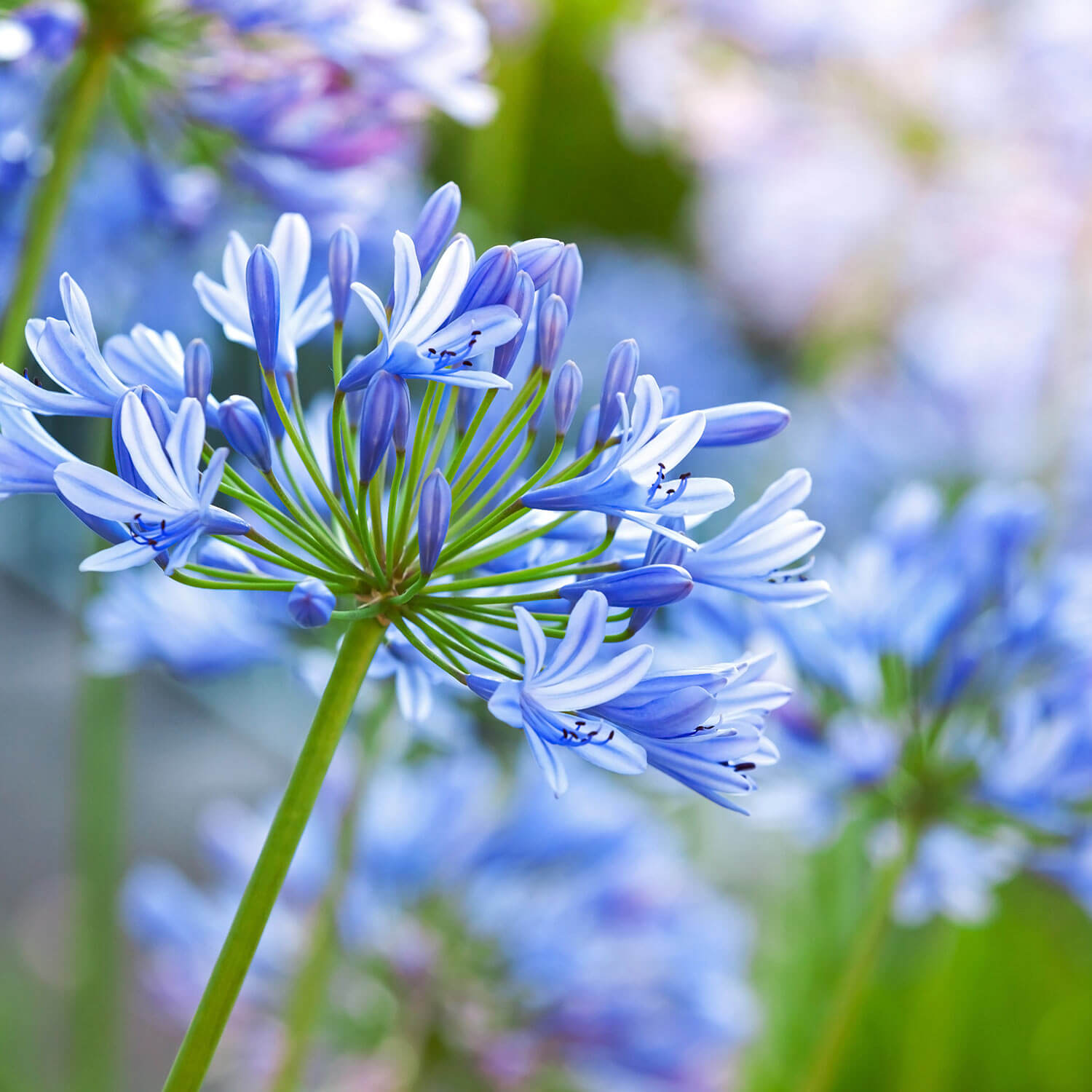Agapanthus Expanding Conditions: Soil, Sunshine, and Watering
Agapanthus Expanding Conditions: Soil, Sunshine, and Watering
Blog Article
Letting Loose the Secret to Successful Agapanthus Cultivation: Tips and Techniques for a Flourishing Yard
In the world of gardening, cultivating agapanthus efficiently calls for a calculated technique that encompasses numerous aspects of plant treatment. By recognizing the subtleties of agapanthus cultivation, one can produce an environment where these plants grow and grow perfectly.
Planting Agapanthus: Best Practices
When planting Agapanthus, correct soil prep work is essential for making sure effective development and growth of these gorgeous flowers. Agapanthus, frequently recognized as Lily of the Nile or African lily, thrives in well-draining soil with a slightly acidic to neutral pH level - Agapanthus. Prior to growing, it is important to amend heavy clay dirts with natural issue such as compost or peat moss to enhance water drainage and offer crucial nutrients for the plants
To grow Agapanthus, select a place that obtains complete sunshine to partial color, as this will certainly promote healthy development and bountiful blooming. Dig a hole twice the size of the plant's root sphere and put the Agapanthus at the exact same depth it was previously growing. Gently backfill the opening with dirt, pushing down strongly to eliminate any type of air pockets around the roots.
Water the newly planted Agapanthus thoroughly and remain to keep the soil evenly moist, especially during the plant's energetic growing season. Agapanthus. Applying a well balanced plant food once a month can additionally support the plant's growth and blooming. By adhering to these finest methods for planting Agapanthus, you can develop a spectacular screen of these fascinating flowers in your yard
Perfect Soil Conditions for Agapanthus
For optimal development and blooming success of Agapanthus plants, making certain the soil problems are optimal is essential. Agapanthus favors soil that is rich in nutrients, so incorporating a well balanced fertilizer throughout the expanding period can promote healthy and balanced development and vivid blossoms.
:max_bytes(150000):strip_icc()/agapanthus-growing-guide-7368912_06ba-bf1fa268243b451387986fbd1e2433b3.jpg)
Watering and Feeding Tips
To make certain healthy and balanced development and lively flowers, proper watering and fertilizing strategies are essential for effective Agapanthus cultivation. Agapanthus plants benefit from normal watering, particularly during the expanding season.
When it comes to feeding Agapanthus, a balanced fertilizer with equivalent parts nitrogen, phosphorus, and potassium can be applied in the springtime to promote healthy development and flowering. Slow-release plant foods are optimal for offering nutrients progressively over a prolonged duration. Prevent over-fertilizing, as this can lead to too much foliage development at the expense of blossoms.
Additionally, incorporating raw material like compost right into the soil can boost nutrient levels and boost soil framework, aiding in the total health and wellness of the Agapanthus plants. By complying with these watering and feeding suggestions, garden enthusiasts can have a peek at this website guarantee their Agapanthus plants flourish and generate spectacular display screens of blossoms.
Trimming and Deadheading Methods
Appropriate trimming and deadheading techniques play an important function in maintaining the health and wellness and aesthetics of Agapanthus plants, matching the crucial practices of watering and feeding for effective cultivation. Trimming Agapanthus entails removing spent blossom heads, dead or yellowing leaves, and general shaping of the plant to advertise far better growth. Deadheading, the process of eliminating discolored blossoms, not only enhances check this the plant's appearance however additionally encourages further flowering.
When deadheading Agapanthus, it is suggested to snip off the flower stem at the base using sharp, clean shears. This procedure reroutes the plant's power from seed manufacturing back right into origin and vegetation development, promoting a healthier and much more robust plant. Regular deadheading can extend the blooming period of Agapanthus and avoid self-seeding, which can cause congestion.
In regards to trimming, Agapanthus normally advantages from a light trim after blooming to clean the plant and urge fresh development. Cutting down the invested flower stems and eliminating any type of dead or damaged foliage helps keep the plant's vitality and total look. Nevertheless, it is necessary to prevent cutting into the crown of the plant, as this can compromise its health and wellness.

Protecting Agapanthus From Pests and Diseases
Implementing reliable bug and illness administration strategies is crucial to safeguarding the wellness and vitality of Agapanthus plants in cultivation. Agapanthus are usually sturdy plants, but they can still succumb numerous bugs and diseases otherwise appropriately cared for. One usual bug that affects Agapanthus is the Agapanthus borer, a caterpillar that tunnels right into the plant, triggering damages to the leaves and blossoms. To avoid infestations, normal inspection of the plants is necessary. If borers are spotted, they can be by hand removed, or insecticidal soap can be utilized as a control measure.
In enhancement to bugs, Agapanthus are prone to conditions such as origin rot and fungal fallen look at this web-site leave areas. By staying alert and attending to bug and illness problems quickly, gardeners can help their Agapanthus prosper and prosper.

Verdict
In final thought, successful farming of agapanthus needs proper growing techniques, excellent soil problems, adequate watering and feeding, normal pruning and deadheading, and defense from insects and conditions. By adhering to these tricks and suggestions, gardeners can ensure a prospering yard loaded with attractive agapanthus blooms. Agapanthus. Remember to maintain regular treatment and interest to information to promote the health and wellness and longevity of these sensational plants
When planting Agapanthus, proper soil prep work is crucial for guaranteeing successful growth and growth of these gorgeous blossoms.Water the freshly planted Agapanthus completely and proceed to maintain the soil uniformly damp, specifically during the plant's active growing period.For optimum growth and flowering success of Agapanthus plants, making certain the soil conditions are suitable is critical. When planting or hair transplanting Agapanthus, make sure the dirt is well-prepared to offer the essential foundation for the plants to establish themselves efficiently. One usual insect that influences Agapanthus is the Agapanthus borer, a caterpillar that passages into the plant, triggering damage to the fallen leaves and blossoms.
Report this page